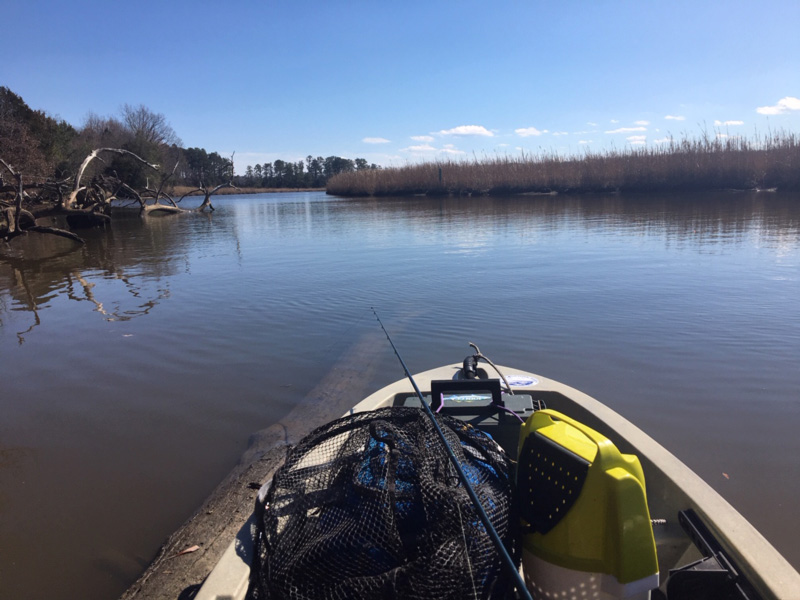I love kayak fishing, but often I will fish a lake without dragging my fish finder along out of pure laziness on my part. There have been times when I fish a new lake and regret not taking the extra gear to read the bottom, tell the water temperature, and see fish and the lake’s contour below me, but I’ve also learned how to get along without it.

My first fish finder was a simple flasher type. It would read the bottom’s depth and if a fish happened to swim by it would show as a blip on the dial. Now you can buy a fish finder that has side-scan and some that even show real time imaging of the bottom of the lake and the fish that inhabit it.
Okay, now back to my original thought: how to avoid having to take the gear and drag the extra weight around on my kayak. Simply put, feed my laziness. Think back to the day when there weren’t electronics. What did those guys do? Well, I can actually tell you because I’m one of them. What we did was read the lake from our perspective above the waterline. I would first look for a topographic map, but more times than not, I couldn’t find a topo map of a local lake or pond and had to learn to read the lake from what I could see.
Look for the following:
- Points of land jutting out into the lake
- Laydowns, dead trees lying in the water along the shoreline
- Changes in shoreline, like riprap meeting earthen banks
- Dams or spillways
- Stump fields
- Grass beds
- Lily pad fields
- Shade
Let’s break each of these down starting with points of land. I like to keep my kayak on the leeward side of any point I’m fishing. Pointing my kayak toward the wind I will fan cast my bait, starting shallow and working my way to deeper water, then repeating the fan cast back to the shoreline.
With respect to laydowns, I try to get my kayak to where I can make a cast to both sides of the tree. I will make several casts, simply retrieving the bait along the tree, sometimes stopping the retrieve and letting my bait drop next to a branch.
Along changes in the shoreline, fish will park themselves where the bottom changes strata, using the area to hide and ambush their prey. Make a few casts, and if there’s no action move on.
Dams and spillways are a great place to find fish, too. Fish will hide in the riprap and in the spring it’s one of the first places to warm as the rocks will warm in the sun, then transmit that warmth to the water. I like to throw small square bill crankbaits at riprap because they erratically bounce off the rocks, generating aggression strikes.
Stump fields also hold fish, especially when there’s a change in water depth. Where the stumps meet the main lake or pond, throw shaky head jigs or Texas rigged plastic worms along the line of demarcation. Then move your kayak out away from the field casting back towards the stumps, and slowly retrieving your bait back to you.
Fish will sit in grass beds and rise to take a bait, or they will dash out from the edges to attack. I will cast a weedless swimbait across the top of grasses and work the edges of a weed bed with paddle tail jig. If you see that there are potholes in the grass, cast a plastic worm into them and work the area.
I treat lily pad fields the same as grass beds but will mix in weedless plastic frogs, working them in a walk-the-dog action or a very slow steady retrieve.
Okay, now this is one of my favorites: shade. When the sun is up, fish go deep unless there’s shade to protect them. I have actually caught fish sitting in the narrow shade of a tree trunk or utility pole. Cast a swim jig through the shade, or a wacky worm under the shade of a tree, and hang on!
You can find all these spots without the help of electronics. And remember, a cast not taken is a fish not caught.
-By Eric Packard